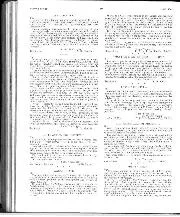
Mintex reply
Sir, "Seventeen shillings for fitting just one pair of brake shoes with linings which were my own property", writes Mr DI Williams in your April publication. We should like to complete…
One of my first jobs at Motor Sport was to test a Ferrari GTC4 Lusso. The subsequent report noted that although the large V12 powered four-seater was brilliantly engineered, it was far more of a grand tourer than a traditional Ferrari and appeared happier on autobahns than mountain roads. This elicited a disdainful response from one reader in particular:
Dear Joe,
I was loaned some various models of the latest V12 last year with the last one being an FF [with which the Lusso shared an engine]. I took that to Reims. When it came to giving it back, I was very reluctant and ended up buying that car. I drove it out to our recent charity event at Maranello, going via the Gotthard and coming back via the Simplon on a route that I used during my time at Ferrari.
I don’t recognise any of the negative points you raised and don’t recognise the shortcomings that you refer to relative to the Lusso’s happiness to be away from the twisty stuff.
Of course, I get many letters disagreeing with points raised in the magazine and the opinions of both myself and our contributors. It is, after all, my job to vet those opinions and in the vast majority of cases I stand by whatever appears in print – as I should – but when I have cause not to I take it extremely seriously.
I replied acknowledging the reader’s point, but standing firm on my view that the four-wheel-drive and almost two-tonne Lusso was less involving than other Ferraris and was happier on the open road than the Italian mountain passes. Still, the letter bothered me, not least because of who had written it (more of which later) which is why I welcomed the chance in June to see whether my original report had been so very wrong.
I was lucky enough to be offered a GTC4 Lusso to drive to the Le Mans 24 Hours and back and, while there, took the opportunity to escape the beer tents and thronging crowds to drive around the approximate route of the 1906 French Grand Prix de l’Automobile Club de France.
I say approximate because exact co-ordinates are hard to come across and there is nothing in the way of street furniture or plaques to acknowledge the fore-runner of modern grand prix racing. Instead I leant on TASO Mathieson’s peerless book: Grand Prix Racing 1906-1914, courtesy of Paul Fearnley.
“Starting on the road junction of N23 and N157, the course followed N157 eastwards to St Calais there; turning north, it continued to La Ferté Bernard on D1. There was a hairpin corner on the outskirts of the town at the junction of D1 and N23. Turning south-west the course then followed N23 back to the road junction outside Le Mans. The grandstand, with the replenishment depots facing it, with a tunnel under the road connecting them, was situated near Pont de Gennes.
“As the streets of St Calais and Vibraye were too narrow for racing… a short road was built across the fields just outside St Calais, thus avoiding the town. In the case of Vibraye, a cart track was discovered in the Fôret de Vibraye and by remaking this and thus forming a deviation, Vibraye too was bypassed. For some reason, probably economy, these two by-pass roads were constructed of wood…”
In all the route is 64 miles long, taking in straight-as-a-die dual carriageways, as well as what we might refer to as ‘twisty stuff’. Back in 1906 the dust and tar roads were lapped six times a day for two days in June by the racing pioneers. I settled for just a single lap, pushing on through lush French countryside and pootling through picturesque French towns all the time being careful to note the driving and handling characteristics of my car…
This was actually quite difficult: despite the fact that the roads have long since been resurfaced and that virtually nothing remains to indicate the history of the route, it is hard not to imagine the ghosts of those early racers clattering through the streets, caked in dust and working their primitive contraptions as onlookers look on in bewilderment. Racers like the eventual winner Ferenc Szisz in his 13-litre Renault, or his team-mate J Edmond, who suffered a breakage of his goggles on the first day and stopped in great pain from the tar and dust in his eyes…
If you are interested in how the race panned out – and for a more detailed report on retracing the route as it is now – I suggest you visit the Motor Sport archive at motorsportmagazine.com and search out our Track Visit report from July 2006. It gives an excellent insight.
But back to the GTC4 Lusso. Sure enough, it tackled the sharp corners with aplomb, even for such a heavy car; and while I maintain that it is happier eating the miles on an autoroute, I now concede it is far from shabby on the twisty stuff. The letter writer obviously knew his stuff.
Thank you for having put me right, Mr Surtees.

Joe Dunn, editor
Follow Joe on Twitter @joedunn90